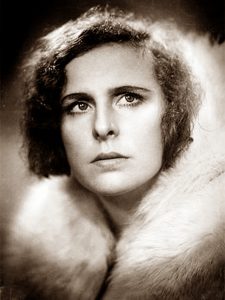Leni Riefenstahl: who was she?
 Helene Bertha Amalie Riefenstahl, better known as Leni, was a lot of things. She was infact a German film director, a producer, a screenwriter, an editor, a photographer, an actress, a dancer and also a propagandist for the Nazi. She was all this and much more than this.
Helene Bertha Amalie Riefenstahl, better known as Leni, was a lot of things. She was infact a German film director, a producer, a screenwriter, an editor, a photographer, an actress, a dancer and also a propagandist for the Nazi. She was all this and much more than this.
She was born in Berlin on 22 August 1902 into a Lutheran Protestant family. After seeing a promotional poster of the 1924 “The Mountain of Destiny”, Leni was inspired to move into the acting. Between 1925 and 1929, she starred in five successful motion pictures.
In 1932 she heard Adolf Hitler and she was attracted by his talent as public speaker. After meeting Hilter, she was offered the opportunity to direct “The Victory of Faith”: a propaganda film about the fifth Nuremberg Rally in 1933. Leni agree and she and Hitler got on well, forming a friendly relationship. Hitler was impressed about the film and asked her to film “Triumph of the Will” about the 1932 party rally in Nuremberg.
Initially she resisted and didn’t want to create further Nazi Party films, instead waiting to direct a feature film based on Hitler’s favorite opera, “Lowlands”. Hitler was able to convince her to film “Triumph des Willenson”. Despite allegedly vowing not to make any more films about the Nazi Party, Riefenstahl made the “Day of Freedom: Our Armed Forces”, about the German Army in 1935.
Hitler invited Riefenstahl to film the 1936 Summer Olimpics scheduled to be held in Berlin, a film which Riefenstahl claimed had been commissioned by the International Olympic Committee “The Blue Light” and in 1930 she directed “Olympia” and the “Triumph of the Will”. Both movies are widely considered two of the most effective, and technically innovative, propaganda film ever made. The exact nature of her relationship with Nazi Party leader Adolf Hitler remains a matter of debate.
She arrived in New York City on 4 November 1938, five days before the “Night of the Broken Glass”. When news of the event reached the United States, Riefenstahl publicly defended Hitler. When Germany invaded Poland, on 1 September 1939, Riefenstahl was photographed in Poland.
From 23 September until 13 November 1940, she filmed in Krün near Mittenwald. The extras playing Spanish women and farmers were drawn from gypsies detained in a camp at Salzburg-Maxglan who were forced to work with her. Filming at the Babelsberg Studios near Berlin began 18 months later in April 1942.
The last time Riefenstahl saw Hitler was when she married Peter Jacob on 21 March 1944. Riefenstahl and Jacob divorced in 1946. As Germany’s military situation became impossible by early 1945, Riefenstahl left Berlin and was hitchhiking with a group of men, trying to reach her mother, when she was taken into custody by American troops.
At the end of the Second War World, Leni was arrested but she wasn’t associated with war crimes. Helene died of cancer on 8 September 2003 at the age of 101.
Riccardo Bernocchi, 3 B Ls



